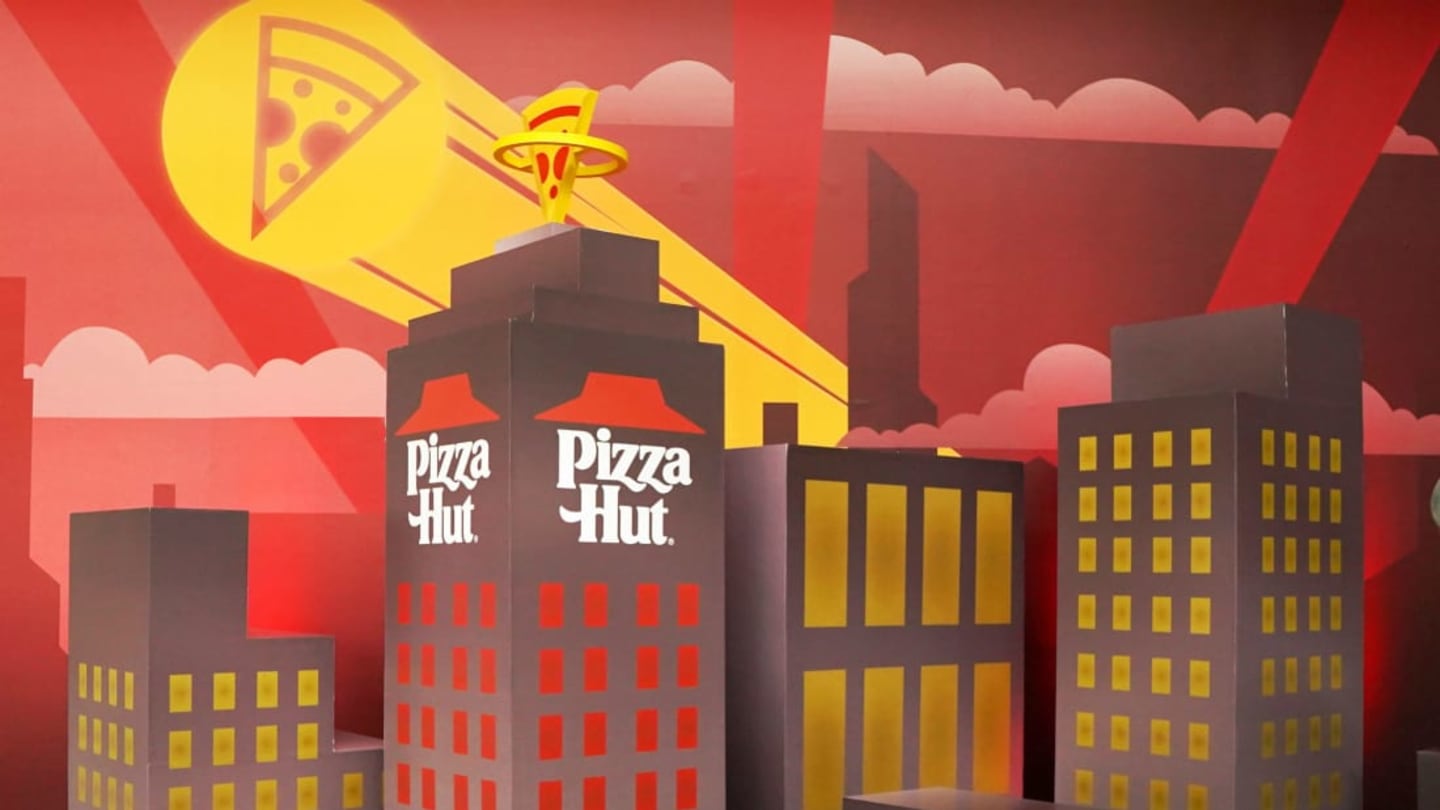Ever heard of a pizza so ambitious it tried to be Italian fusion before it was cool? Well, back in 1985, Pizza Hut took a swing at that with the Priazzo. This wasn’T Your Average Pie; picture this: double-Crust Heaven, piled high with pepperoni, mushrooms, onions, spinach, ham, bacon, tomatoes, and a whole pound of cheese. Four varieties were available – Roma, Milano, Florentine, and Napoli – each promising a taste of Italy.
Pizza Hut was betting big on the Priazzo. They’d already tasted success with the Personal Pan Pizza, and they hoped this super-sized creation would be just as popular. But there was a catch: It Only Became Available After 4 p.m. on weekdays. That wasn’t exactly ideal for lunchtime cravings, which were likely a big part of their Personal Pan Pizza success. Imagine you’re craving a quick bite during Your Workday – the Priazzo from Pizza Hut probably wouldn’t be top of mind.
A Culinary Experiment: Pizza Hut’s Priazzo
The Priazzo was definitely ambitious. It wasn’t just about piling on more toppings; it was about creating a pizza experience that felt different, almost like a culinary experiment. Each of the four varieties offered a unique flavor profile inspired by Italian regions. The Roma, for example, featured spicy pepperoni and olives, while the Florentine boasted spinach, mushrooms, and feta cheese.
But here’s the thing: while Pizza Hut tried to make it feel authentically Italian, Traditional Pizza Purists Probably wouldn’t have recognized this as a true representation of their beloved dish. It was more like an American interpretation of Italian flavors, taking inspiration but ultimately going in Its Own Direction. Think of it as a cousin to the classic Margherita, sharing some common ground but definitely Forging Its Own Path. This fusion approach might have appealed to adventurous eaters who were looking for something beyond a standard pepperoni pizza, but it also likely alienated those seeking a more traditional experience.
Italian Fusion or Failed Attempt?
Despite the marketing push and the Intriguing Concept, the Priazzo’s reception was lukewarm at best. It seems like consumers weren’t quite ready for this double-crust, overloaded Italian fusion experience. Maybe they were happy with their classic pepperoni or veggie pizzas, or perhaps the limited availability after 4 p.m. on weekdays just didn’t make it a convenient choice for many.
 Seven Facts: Behind the Scenes of Se7ens Dark Thriller
Seven Facts: Behind the Scenes of Se7ens Dark ThrillerThe fact that Pizza Hut poured $15 million into a marketing campaign featuring an Italian opera soundtrack speaks volumes about how seriously they took this venture. They believed in the Priazzo Pizza Hut concept, but ultimately, the public wasn’T As Convinced. It’s a classic case of a good idea falling short due to market conditions and consumer preferences. Sometimes, even with the best intentions and Biggest Budget, Things Just don’t click with the target audience.
Marketing the “Italian Pie”
Pizza Hut went all out to promote the Priazzo. They understood that this wasn’T Just Another Pizza; it was a culinary experiment with an Italian flair, and they wanted to make sure people knew that. They plastered billboards with images of the double-Crust Masterpiece, promising a taste sensation unlike anything else on the market.
Think about those old commercials – remember the ones with dramatic music and folksy narration? That’s the kind of vibe Pizza Hut was going for. They even incorporated an Italian opera Soundtrack Into Their Ads, trying to evoke a sense of sophisticated dining right there in your Living Room. It was a bold strategy, attempting to elevate pizza from mere food to a cultural experience.
The Priazzo’s Downfall: Supersize and Limited Availability
While the Priazzo’s ambitious design was certainly eye-catching, it might have been its own downfall. A double-crust pizza piled high with toppings is a lot to handle for even the hungriest of customers. It wasn’t exactly a grab-and-Go Meal, which could have turned off people looking for a quick lunch option. Imagine trying to eat that behemoth on your break at work – It Just wouldn’t be practical!
Then there was the availability issue: the Priazzo only rolled out after 4 p.m. on weekdays. This limited window made it less appealing for those who were craving Pizza During Their Lunch Hours. Think about how many people rely on a quick, Convenient Meal During Their Workday – the Priazzo just wasn’t fitting into that lifestyle.
Back to Basics: Lessons Learned from the Priazzo
The Priazzo’s story serves as a reminder that even the most innovative ideas can Fall Flat If They don’t align with consumer needs and preferences. Sometimes, sticking to what works best is the smarter move.
Pizza Hut likely learned a valuable lesson from this experience: while experimenting with new concepts is important, it’S Crucial To Consider Practicality, availability, and target audience when bringing something New To Market. The Priazzo might have been a Culinary Experiment Worth Trying, but it ultimately showed that sometimes, the classics are just classics for a reason.










